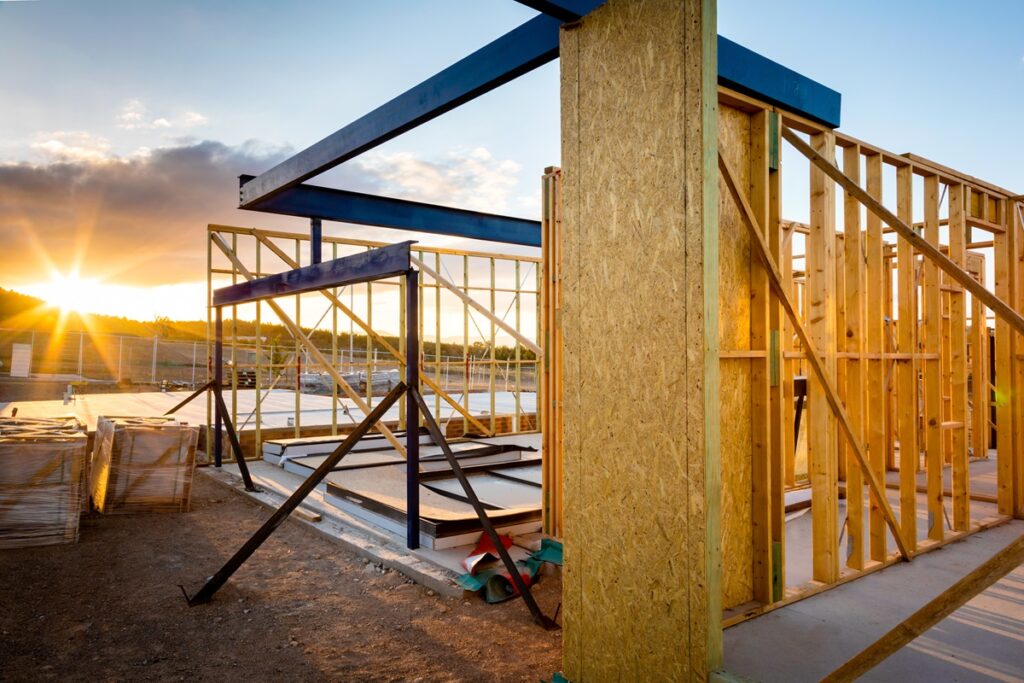According to the latest new residential construction data from the U.S. Department of Housing & Urban Development (HUD) and the U.S. Census Bureau, the nation’s home builders began to pull back on new construction in the month of April, amid the Federal Reserve’s ‘higher for longer’ stance, and ramped up completions of homes already in pipeline.
According to HUD data, privately‐owned housing completions in April 2024 were at a seasonally adjusted annual rate of 1,623,000—8.6% above the revised March 2024 estimate of 1,495,000, and 14.6% above the April 2023 rate of 1,416,000. Single‐family housing completions in April were at a rate of 1,092,000, which was 15.4% above the revised March rate of 946,000. The April 2024 rate for units in buildings with five units or more stood at 516,000.

“A bright spot in today’s report is the increase in single-family completions,” said First American Deputy Chief Economist Odeta Kushi. “Completions were up 15% compared to last month, and nearly 14% higher than one year ago. Single-family completions reached the highest level since November 2022–this is new supply that can immediately help offset current housing shortages.”
In April 2024, privately‐owned housing units authorized by building permits were at a seasonally adjusted annual rate of 1,440,000—3% below the revised March rate of 1,485,000, and 2% below the April 2023 rate of 1,470,000. Single‐family authorizations in April were at a rate of 976,000, which was 0.8% below the revised March figure of 984,000. Authorizations of units in buildings with five units or more were at a rate of 408,000 in April.
“Single-family starts were down in April as mortgage rates increased,” added Kushi. “Single-family permits, a leading indicator of future starts, decreased for the third consecutive month, signaling single-family production may decline further in months to come.”
The April Housing Forecast from Fannie Mae put the average 30-year fixed-rate mortgage (FRM) at 6.7% during the first quarter of 2024.
“Higher mortgage rates reduce affordability and suppress sales of new and existing homes,” said Kushi. “Homebuilders are still able to offer incentives, such as rate buydowns, to entice buyers, which is why new-home sales will likely continue to outperform the existing-home market. However, ‘higher for longer’ rates are still a major headwind to builders.”
In early May, for the sixth meeting in a row, the Federal Reserve’s Federal Open Market Committee (FOMC) left interest rates unchanged, a trend that has continued as the Committee chose to hold rates steady at 5.50% at their last five meetings as well.
And in April, privately‐owned housing starts were at a seasonally adjusted annual rate of 1,360,000—5.7% above the revised March estimate of 1,287,000, but 0.6% below the April 2023 rate of 1,368,000. Single‐family housing starts in April were at a rate of 1,031,000—0.4% below the revised March 2024 figure of 1,035,000. The April rate for units in buildings with five units or more was 322,000.
National Association of Home Builders (NAHB) Chief Economist Robert Dietz added, “Moving forward, the multifamily market will see additional declines for construction volume, while the pace of completions remains elevated. April marked the fifth consecutive month for which the seasonally adjusted rate of multifamily completions was above 500,000. This additional rental supply will help lower shelter inflation, which is the last leg of the inflation policy challenge.”
“This report tracks with recent builder sentiment,” added Kushi. “In May, homebuilder sentiment posted its first decline since November, and officially drifted into negative territory. All three of the index’s components decreased–current sales conditions declined six points to 51, buyer traffic decreased four points to 30, while sales expectations in the next six months fell nine points to 51.”
Regionally, combined single-family and multifamily starts were 24.5% lower in the Northeast, 11% higher in the Midwest, 1.8% higher in the South, and 8.4% higher in the West.






